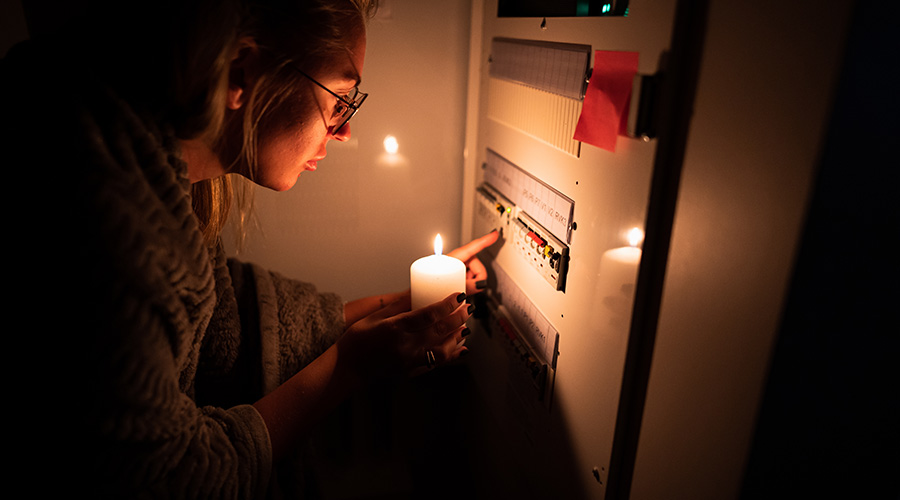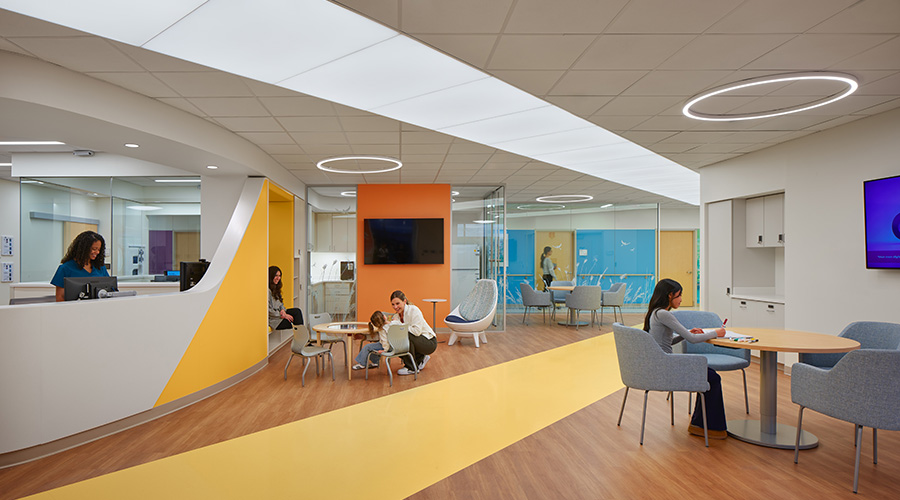The University of California, Davis' Health & Wellness Center in Davis, Calif., which opened in 2010 to replace an aging 1950s student health center, houses primary care services and specialty services such as acupuncture and neurology, as well as laboratory services and office support areas. Covering over 75,000 square feet, the facility earned LEED-NC Gold in 2012 by incorporating a range of green technologies that help it perform at least 20 percent better than California Energy Code, per university mandate.
One of the strategies that really drives energy efficiency in the facility is the use of chilled beams, says an article in High Performing Buildings. Chilled beams are not typically used in the United States, largely due to lack of familiarity with the technology.
"Chilled beams bring cooling to the zone level, virtually eliminating reheat and allowing the amount of air delivered to be reduced to only what is required for ventilation," says the article. "They also reduce the fan energy associated with heating, cooling and ventilation, resulting in greatly reduced energy needs compared to a traditional HVAC system."
Chilled beams can be especially beneficial in terms of energy efficiency in facilities with high ventilation requirements, as they help separate ventilation from conditioning requirements. Also, chilled beams use warmer water than would be used for dehumidification, so cooling plant performance improves.
The chilled beam system at the Health & Wellness Center allows for benefits beyond direct energy use. The facility's 100 percent dedicated outdoor air system is augmented by the induction characteristics of chilled beams, allowing for high air changes in occupied spaces and preventing stratification. Smaller ducts allowed for a 3-foot shorter facility, saving on envelope materials.
In addition to the chilled beams, other systems driving sustainability include a 41 percent window to wall ratio for access to natural light, operable windows, a section of vegetative roof, occupancy sensors and water-conserving restroom fixtures.
Read the article.

Chilled beams push UC Davis Health & Wellness Center to LEED Gold
The University of California, Davis' Health & Wellness Center in Davis, Calif., earned LEED-NC Gold in 2012 by incorporating a range of green technologies that help it perform at least 20 percent better than California Energy Code.
By Healthcare Facilities Today
March 6, 2013
Topic Area: Sustainable Operations
Recent Posts
 Contaminants Under Foot: A Closer Look at Patient Room Floors
Contaminants Under Foot: A Closer Look at Patient Room Floors
So-called dust bunnies on hospital room floors contain dust particles that turn out to be the major source of the bacteria humans breathe.
 Power Outages Largely Driven by Extreme Weather Events
Power Outages Largely Driven by Extreme Weather Events
Almost half of power outages in the United States were caused by extreme weather events.
 Code Compliance Isn't Enough for Healthcare Resilience
Code Compliance Isn't Enough for Healthcare Resilience
Intensifying climate risks are pushing hospitals to think beyond code requirements and toward long-term resilience.
 Ribbon Cutting Marks First Phase Completion for New Montefiore Einstein Facility
Ribbon Cutting Marks First Phase Completion for New Montefiore Einstein Facility
The second phase is expected to be completed in the second half of 2027.
 Nemours Children's Health Opens New Moseley Foundation Institute Hospital
Nemours Children's Health Opens New Moseley Foundation Institute Hospital